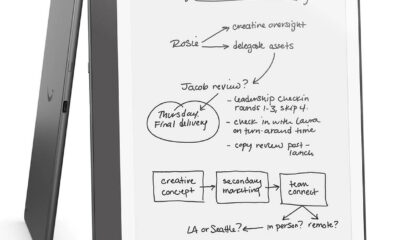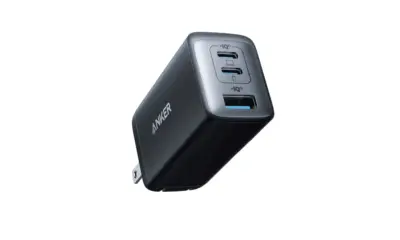Business
Small Modular Reactors Surge as Corporations Embrace Nuclear Energy

Nuclear energy is experiencing a significant resurgence, driven by the emergence of small modular reactors (SMRs). Once viewed as niche technology, SMRs are now positioned as key players in the global energy landscape, responding to the rising demand for energy from artificial intelligence and the need for industrial decarbonization. Major industry stakeholders like NuScale Power, Amazon, and Terrestrial Energy are investing heavily in this technology, marking a shift from theoretical discussions to substantial commercial projects.
The appeal of SMRs lies in their scalability and flexibility. Unlike traditional gigawatt-scale reactors, these smaller units can provide dedicated, carbon-free baseload power, which is increasingly vital in a world grappling with energy shortages. In early September 2025, NuScale Power made headlines with a collaboration involving the Tennessee Valley Authority (TVA) and ENTRA1 Energy to deploy up to 6 gigawatts of its SMR technology in the TVA service area. This agreement represents the largest SMR commitment in U.S. history and is structured to mitigate financial risks by having ENTRA1 finance, own, and operate the facilities, selling power back to TVA through a long-term Power Purchase Agreement.
The potential of SMRs extends beyond electricity generation; they also have the capacity to provide industrial heat, which accounts for nearly 20% of global energy demand, as noted by the Clean Energy Forum. Terrestrial Energy is addressing this need with its Integral Molten Salt Reactor, a Generation IV design that uses molten salt as both coolant and fuel. This technology is particularly suited for producing clean hydrogen and synthetic fuels. In October 2025, Terrestrial Energy completed a merger with HCM II Acquisition Corp., raising approximately $293 million to support its U.S. licensing and construction efforts, with plans for its first commercial project at the Texas A&M RELLIS Campus.
The rise of SMRs also reflects a broader trend where large corporations are taking control of their energy futures. In October, Amazon announced plans for the Cascade Advanced Energy Facility in Washington, collaborating with Energy Northwest to deploy X-energy’s Xe-100 SMRs. The facility will start with 320 MW of capacity, scaling up to 960 MW. This move illustrates a shift in corporate strategy, as tech giants increasingly build their own energy infrastructure to ensure reliability and resilience.
As governments recognize the strategic importance of SMRs for energy security and industrial competitiveness, momentum is building worldwide. The 2020s are poised to be a transformative decade for nuclear innovation, with numerous designs now licensed. Yet, challenges remain. Transitioning from prototype to production entails significant execution risks, particularly around cost control. The experience from the Georgia Vogtle project, the first new U.S. nuclear plant in decades, underscores these risks, where minor design changes led to extensive delays and financial overruns.
Efforts to standardize SMR designs and factory manufacturing could alleviate some of these concerns. Nonetheless, supply chain issues pose a considerable challenge. The specialized components and materials required for nuclear reactors are not easily produced, and the industry must rebuild much of its manufacturing base after years of contraction. U.S. developers are already competing for limited resources in critical areas.
The regulatory environment also plays a crucial role in the success of SMRs. While the U.S. Nuclear Regulatory Commission has modernized some processes, the lengthy site licensing and environmental reviews can slow project timelines. Furthermore, a lack of harmonized licensing standards globally can hinder the ability to scale SMR technology across markets.
Financing structures are evolving, with models like ENTRA1’s “nuclear-as-a-service” shifting risk away from utilities. However, sustaining investor confidence requires consistent policy support and successful project execution. The nuclear industry operates under intense scrutiny, and early setbacks could jeopardize momentum.
As the small modular reactor sector transitions from concept to reality, the focus is shifting from whether these technologies will be integrated into the global energy mix to how swiftly they can be constructed and who will lead the charge. The next ten years will be critical in determining whether SMRs can serve as a flexible, financially viable bridge between ambitious clean energy goals and the practical needs of industry.
-

 World4 months ago
World4 months agoScientists Unearth Ancient Antarctic Ice to Unlock Climate Secrets
-

 Entertainment4 months ago
Entertainment4 months agoTrump and McCormick to Announce $70 Billion Energy Investments
-

 Lifestyle4 months ago
Lifestyle4 months agoTransLink Launches Food Truck Program to Boost Revenue in Vancouver
-

 Science4 months ago
Science4 months agoFour Astronauts Return to Earth After International Space Station Mission
-

 Technology2 months ago
Technology2 months agoApple Notes Enhances Functionality with Markdown Support in macOS 26
-

 Top Stories3 weeks ago
Top Stories3 weeks agoUrgent Update: Fatal Crash on Highway 99 Claims Life of Pitt Meadows Man
-

 Sports4 months ago
Sports4 months agoSearch Underway for Missing Hunter Amid Hokkaido Bear Emergency
-

 Politics3 months ago
Politics3 months agoUkrainian Tennis Star Elina Svitolina Faces Death Threats Online
-

 Technology4 months ago
Technology4 months agoFrosthaven Launches Early Access on July 31, 2025
-

 Politics4 months ago
Politics4 months agoCarney Engages First Nations Leaders at Development Law Summit
-

 Entertainment4 months ago
Entertainment4 months agoCalgary Theatre Troupe Revives Magic at Winnipeg Fringe Festival
-

 Top Stories1 week ago
Top Stories1 week agoFamily Remembers Beverley Rowbotham 25 Years After Murder





















